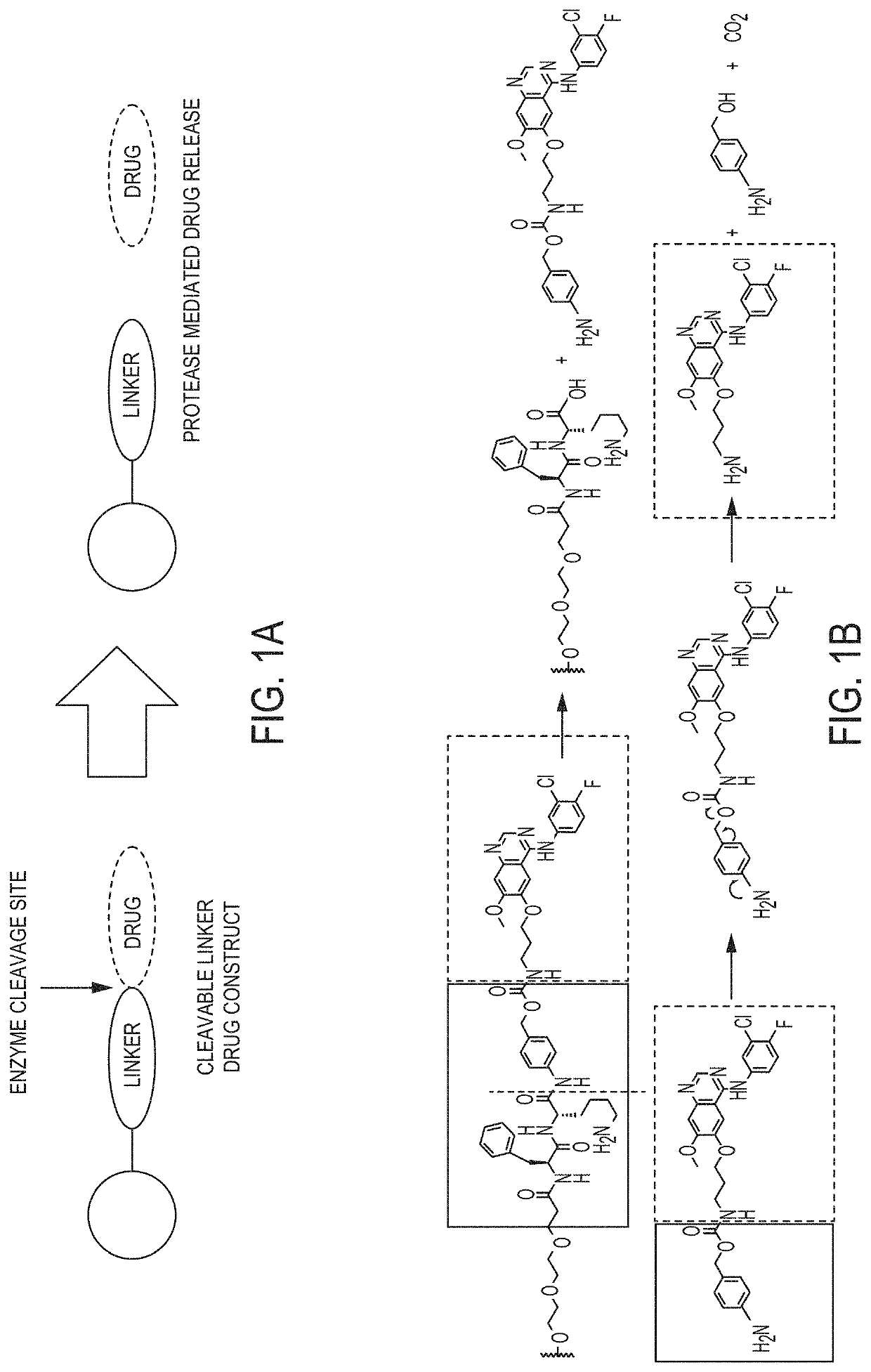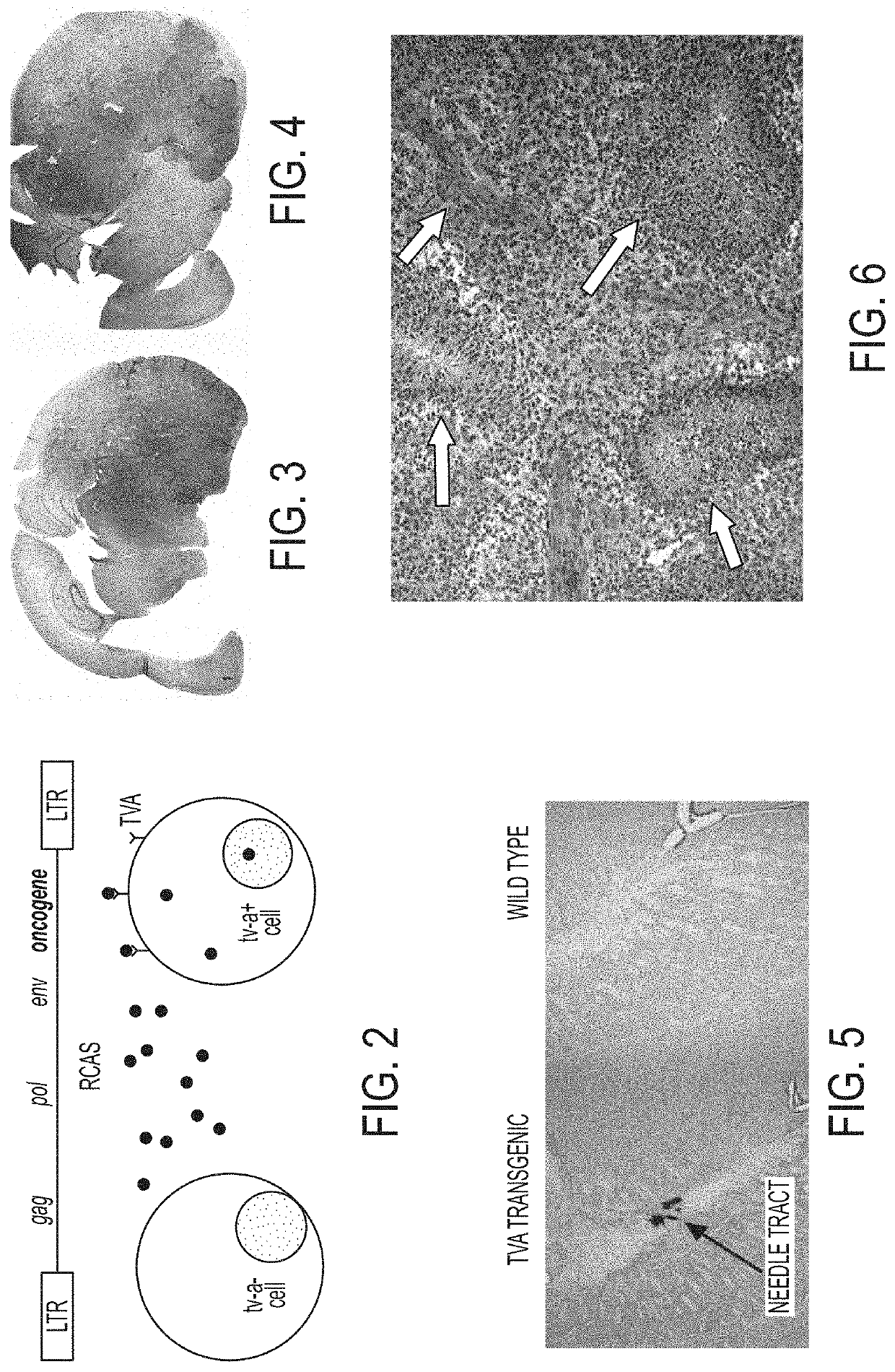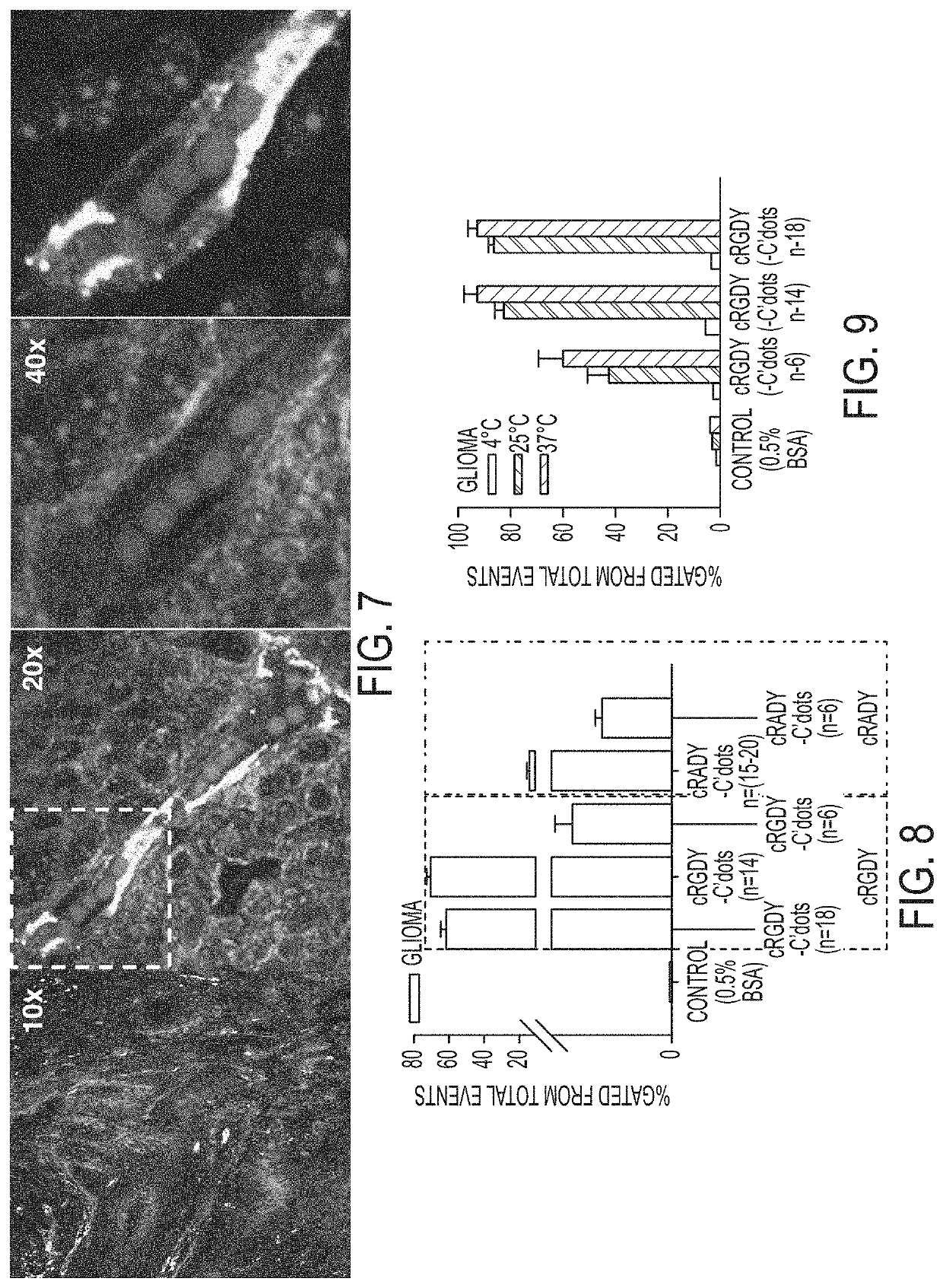Compositions and methods for targeted particle penetration, distribution, and response in malignant brain tumors
- Summary
- Abstract
- Description
- Claims
- Application Information
AI Technical Summary
Benefits of technology
Problems solved by technology
Method used
Image
Examples
example 1
ion, Efficacy, and Optimized Dosing of C′-Dots in Brain Tumors
[0176]The present Example provides for (1) determining the intratumoral and intracellular distribution dynamics of C′-dots in brain tumors as a function of blood-brain permeability, time, RGD targeting and drug conjugation using a genetically-engineered mouse glioma model, and (2) determining the pharmacologic efficacy and optimized dosing of C′-dots conjugated to small molecule EGFR inhibitors via cleavable linkers in a metastatic model of EGFR-mutant non-small cell lung cancer.
[0177]Following incubation of EGFRmt+ and PDGFB-driven tumor cell lines with gefitinib (or dasatinib)-modified C′ dots, cellular internalization, inhibitory profiles, and viability were evaluated over a range of particle concentrations and times (i.e., 6, 18 hrs) relative to native SMIs. Regarding EGFRmt+ expressing cell lines, non-small cell lung cancer (NSCLC) lines were tested, including L858R ECLC26, a line containing an activating single-poin...
example 2
g the Tumor Microenvironment with Targeted Ultrasmall Silica Nanoparticle Imaging Probes (C′ dots) for Small Molecule Inhibitor Delivery and Imaging
[0193]Therapeutic approaches targeting high-grade glioma have largely failed. An alternative strategy is to regulate cells, such as tumor-associated macrophages and microglia (TAMs), in the tumor microenvironment (TME). TAMs account for as much as 30% of the tumor mass in mouse models of high-grade glioma and in brain tumor patients; TAM accumulation is associated with higher glioma grade and poor patient prognosis. Colony stimulating factor-1 (CSF-1) is known to influence differentiation and survival of macrophages, as well as their activation or polarization state. In a PDGF-driven mouse glioma model, inhibition of CSF-1R has been shown to suppress the M2 phenotype, to reduce tumor growth, and improve survival.
[0194]The present Example selectively delivers small molecule inhibitors, such as the CSF-1R agent BLZ945, to TAMs by attaching...
PUM
 Login to View More
Login to View More Abstract
Description
Claims
Application Information
 Login to View More
Login to View More - R&D
- Intellectual Property
- Life Sciences
- Materials
- Tech Scout
- Unparalleled Data Quality
- Higher Quality Content
- 60% Fewer Hallucinations
Browse by: Latest US Patents, China's latest patents, Technical Efficacy Thesaurus, Application Domain, Technology Topic, Popular Technical Reports.
© 2025 PatSnap. All rights reserved.Legal|Privacy policy|Modern Slavery Act Transparency Statement|Sitemap|About US| Contact US: help@patsnap.com



